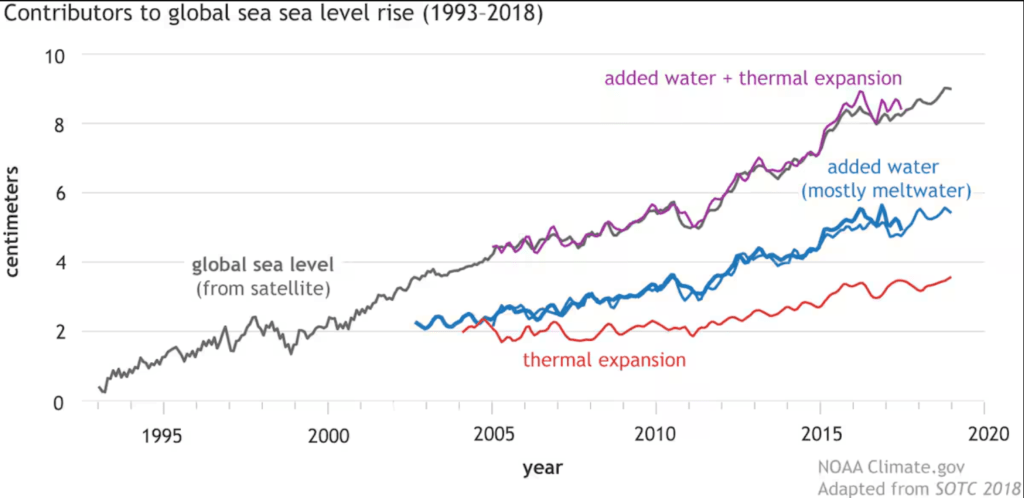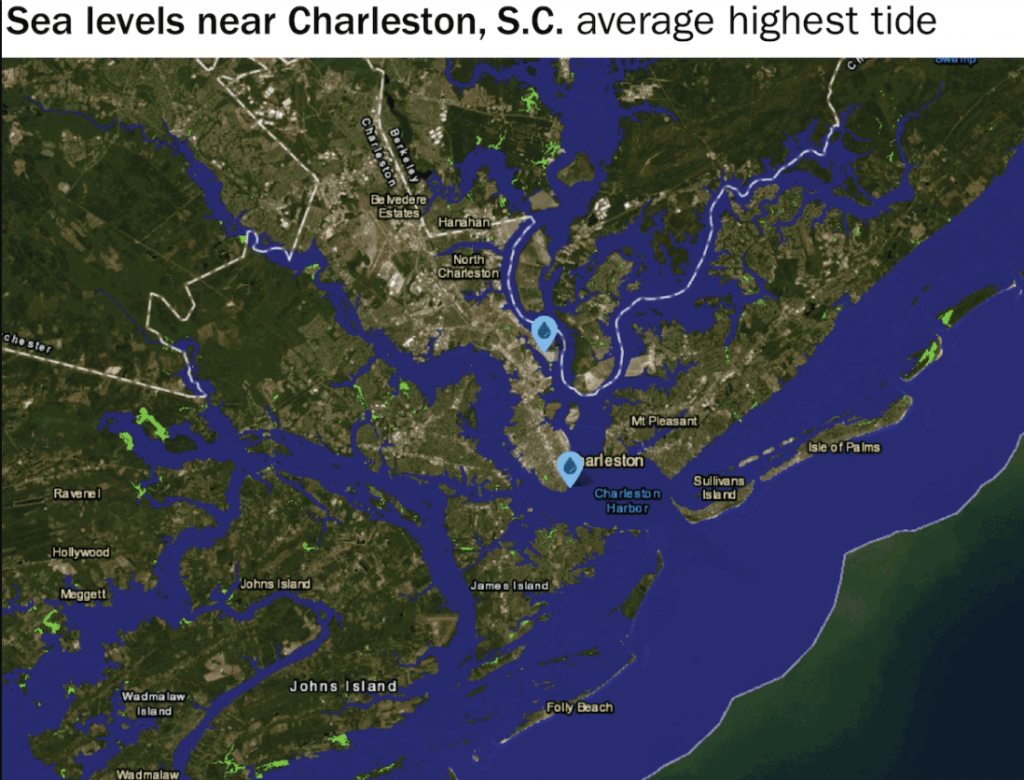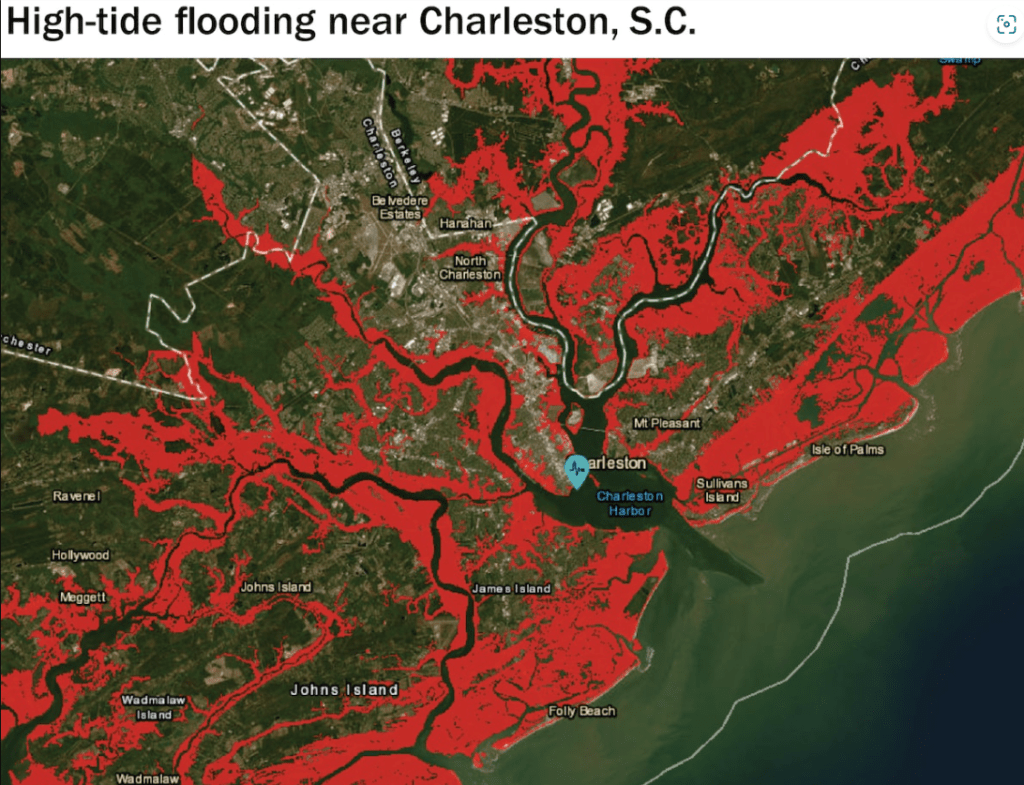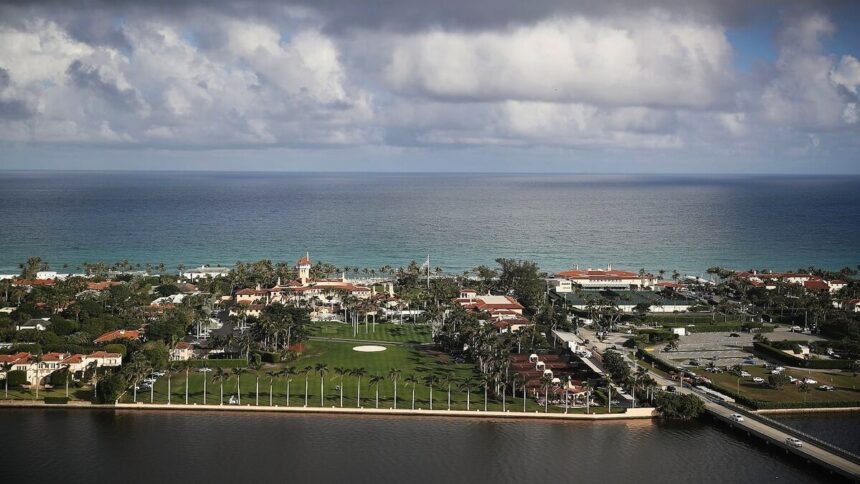An Inaccurate View of Climate Change
The former president Donald Trump made a number of false and misleading statements on climate change and its effects in a recent interview with Elon Musk. Especially in relation to increasing sea levels, one specific remark caught my attention as a clear illustration of his perspective on reality.
Trump ignored climate change by downplaying the expected rise in sea levels, estimating that they would only rise by “one-eighth of an inch over the next 400 years.” He made the implication that by adding more seaside property, this small increase would have no effect and might even be advantageous. But this assertion is false in terms of both facts and deceptive language.
Sea Level Rise: The Actual Data
The Intergovernmental Panel on Climate Change (IPCC) of the United Nations estimates that between 1901 and 2018, the global mean sea level rose by around 0.20 meters, or 8 inches. Over the course of several decades, the pace of sea level rise has increased, rising from around 0.05 inches year between 1901 and 1971 to 0.15 inches annually in more recent times. This acceleration is associated with melting ice and rising global temperatures.

According to National Oceanic and Atmospheric Administration (NOAA) projections, if present emission rates continue, the U.S. coasts may rise by around 2 feet by the year 2100. In more extreme cases, future emissions might cause sea levels to increase by as much as 7 feet. Significant dangers are associated with this sea level rise, such as increased frequency of floods and damage to coastal infrastructure.
Myths Regarding Oceanfront Real Estate
There are serious problems with Trump’s claim that more beachside real estate will become available as sea levels rise. The area of land exposed to the water declines rather than grows as sea levels rise. The quantity of land that is left at the water’s edge decreases as a result of coastal regions being inundated due to rising sea levels.
For example, a straightforward calculation shows that coastline length would decrease even with a little rise in sea level. Interactive tools are available from the NOAA to illustrate the potential effects of varying sea level rise on different coastal locations. Rising sea levels have already made flooding more common in areas like Charleston, South Carolina, making it an occasional occurrence now.

The Actual Effect: a Rise in Floods and Damage
More beachfront real estate development is not the real problem with increasing sea levels; rather, it is the growing danger of flooding and storm damage. Places that are currently vulnerable to flooding will see an increase in frequency, while previously unaffected regions will become more vulnerable. Many coastal communities are already experiencing the consequences of rising sea levels, such as “sunny day flooding” and other problems.

Trump’s comments on sea level rise are indicative of a larger trend in which the dangers of climate change are minimized or misrepresented. The grave consequences of increasing sea levels and their effects on coastal residents and infrastructure are purposefully disregarded by his remarks.
Trump’s claims on sea level rise present a skewed picture of the state of science. The data indicates that sea levels are rising more quickly than previously thought, increasing the likelihood of flooding and posing serious hazards to coastal communities. His remarks draw attention to a worrying pattern of downplaying or distorting important environmental concerns, which has genuine repercussions for populations impacted by climate change.
Read More: Thomas Matthew Crooks: The Person Behind of Donald Trump’s Assassination Attempt






